It is a good way to know more about the Yoga as the world celebrates 21st June 2016 as the 2nd International Yoga Day.
Yoga: The accurate meaning of the word Yoga is to “Add”. Yoga originated a long time back to the mythological times ( over 5000 years) in India. Another meaning is ‘remain confident in all you do’. All in all, it is the practice of the idea that mind and the body are one. The word ‘Yog’ originated in India. The definitive aim of Yoga is to unite oneself with the higher being or attain greater awareness or a state of mind, where there is no stress or strife and a balance gets maintained for life for leading a productive experience.
One can quickly get focused on the beneficial effects of breath and enhance the cosmic energy in a physical world that is the human body of the participant.
Many trends for training or workouts come and go in the way people exercise or work out. Yoga is here to stay – always constant and steady and in harmony. It is a mixture of keeping the mind and body in a state of bliss. There is no error or fear but a feeling of joy and peace. It is much more than just burning the calories. It includes slow and steady stretching the muscles and mind relaxation by controlling thoughts or meditating while breathing and moving the limbs. It can also mean to attain a state of increased calmness; or otherwise, reduce levels of pain, anxiety, stress or anger.
Now we consider different types of Yoga:
In Patanjali Yoga, the intensity is a slow and gentle well-being builds up after getting introduced. It blends the stages as follows: Always concentrating on the breath following the asanas or postures of the body. First, lying on the back for various stretches, second, remaining in the stomach and in the third stage in sitting position. One can do the jogging or aerobics steps either before or after the yoga asanas to have a good circulation of blood and generating heat before starting the pranayamas ( the breathing regime)
In general, the one must perform yoga with positive motivation to get good results. The Hatha & Iyengar have the same line of thought as the Patanjali just mentioned above.
Also see – A new of doing yoga on a paddle board, check this guide on how to practice yoga on a SUP.
Kundalini: It derives its name through a focus on awakening Kundalini energy stored in the bottom of the backbone through regular practice of meditation, pranayamas, chanting mantras, performing asanas.
Vinyasa. A set of postures that slide easily into one another.
Bikram and Power yogas are much fast and more aggressive. They get practiced in controlled conditions of temperature, place and time. The modern age Yoga is named Power or Bikram yoga, and some have got westernized names like Blue or Red Yoga. There are over 100 different types.
Yoga ( The physical) effects and covers all areas and muscles of the body so that no body part gets left to chance. The central part of the body’s muscles and the fat need tackling in most of the cases. Noka asana or Boat can take care of the love handles ( areas around waist).The power of your yoga practice depends on which form of yoga you choose.
It is essential that one starts yoga under a trained teacher of any particular Yoga type.
Following Poses appear in all the Yoga system
1. Tree pose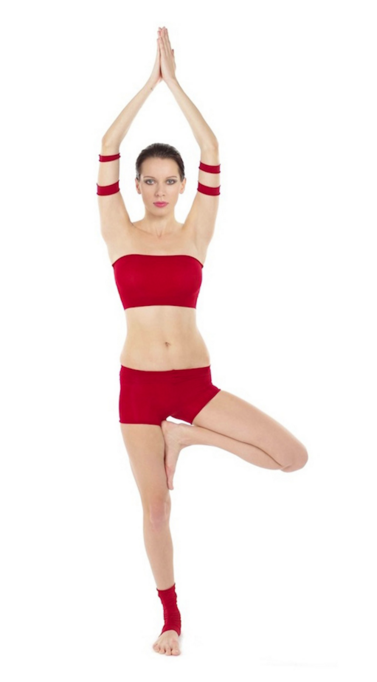
Photo Credit: Wikipedia
2) Triangle Pose

Photo Credit: Wikipedia
3) Chair pose
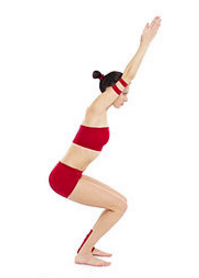
Photo Credit: Wikipedia
4)Warrior pose

Photo source; WIKIPEDIA
5) Butterfly pose
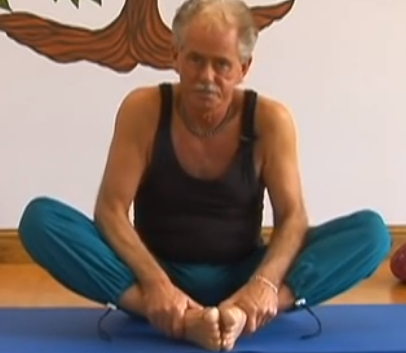
6) The Child pose
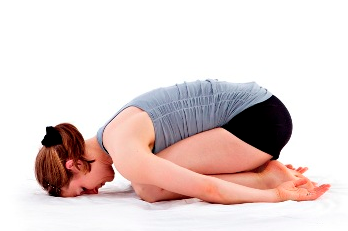
Photo credit: theyogicprescription.com
7) Bridge Pose

photo credits:http://www.artofliving.org/yoga/yoga-poses/bridge-posture-setu-bandhasana
8) Spinal Twist,

photo credit: Wikipedia
9) Upward Facing Dog

Photo credit:thescienceofeating.com
10) Downward Facing Dog
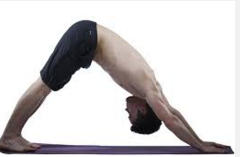
photo credit: cstem.co.uk
11) Plank Bridge
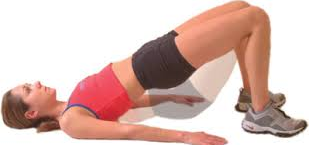
Photo Credit: lifehack.org
12)Mountain Pose
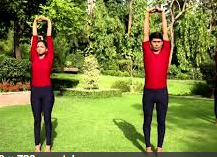
Photo Credit: Youtube






